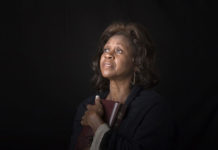BEYOND US AND THEM
As multiple factors such as urbanization, globalization, age, lifestyle, and vocation continue to impact communities nationwide, churches and their leaders are discovering the multitude of “others” in their midst.
Crossing cultures has been the lifework of Dr. David Anderson. In addition to pastoring Bridgeway Community Church (bridgewayonline.org), a multicultural church in Columbia, Maryland, Anderson consults other churches through the BridgeLeader Network (bridgeleader.com). He is also the author of books on the subject, including his latest, Multicultural Ministry (Zondervan). Anderson recommends four cornerstones for transforming a homogenous congregation into a more diverse group, whether that diversity is ethnic, socio-economic, generational, cultural, or any other factor:
Intentionality. Placing yourselves in environments where people are different from you.
Identification. Building bridges through common-ground connections.
Insight. Learning to listen rather than label.
Instruction. Leading those around you through discipleship and teaching.
The first cornerstone, intentionality, has been the most challenging, he says, as well as the most rewarding aspect of his ministry over the last 12 years at Bridgeway. For him, the effort to be more inclusive has yielded a new understanding of God.
“Multicultural ‘proactivity’ actually produces a whole new level of experiences that cause us to feel and see God in a totally different way,” Anderson says. “I’m convinced of it.”
It isn’t only that God looks more diverse on the faces of different races in the Church, but that the Christian culture transcends the multitude of human cultures that come together to find unity in Christ.
“There’s a difference between being multicolored and multicultural,” Anderson explains. “It costs to be multicultural, and most people don’t want that.” Being multicolored is a good first step for churches, he says, but including people of differing cultures—socio-economic groups, ethnicities, worship styles, etc.—must be a burden or calling in a leader’s heart. The multicultural vision some churches have adopted impacts nearly every aspect of ministry, from curriculum and leadership to worship and music.
Anderson suggests that leaders view worship style for a multicultural church in the same way they may think about what to serve if they invite new friends over for dinner: “If they’re not Korean, you’re probably not going to make kimchi,” he says. “Choose something that’s safe like beef or chicken, common food, then pepper it with ethnic side dishes. They don’t mind kimchi on the table when it’s something new to try, but find out what your meat and potatoes dish is.”
REACHING ONE CULTURE
Making church relevant has been the primary focus for McManus at Mosaic. The mostly young and single congregation has grown from a couple of hundred to a couple of thousand. Other Mosaic churches have been planted in Seattle, Miami, Atlanta, Dallas, Berkeley, California, and Manhattan, New York. And there is a move to plant Mosaic in every major city in Europe.
But none of that was intended to update the church the way you might update a wardrobe. McManus is outspoken on the vision of Mosaic—not to be the coolest church in the city of angels—though it definitely contends for that honor, but to be the most relevant. That means it must be effectively reaching one culture—the unchurched. That outreach also comes through relationships.
Some church leaders have asked McManus how he cultivated a multicultural, multiethnic congregation, 40% of who are Asian. “Here’s the secret,” he says matter-of-factly. “I actually like Asians, you know…I have friends who are Asian and they have, guess what, family who are Asian.”
For McManus, church isn’t about diversity, but about reaching the unchurched in a community that’s already diverse. “I don’t just want to reflect communities. I want to transform them.”
Copyright © by Outreach magazine. All rights reserved. Used by permission.












